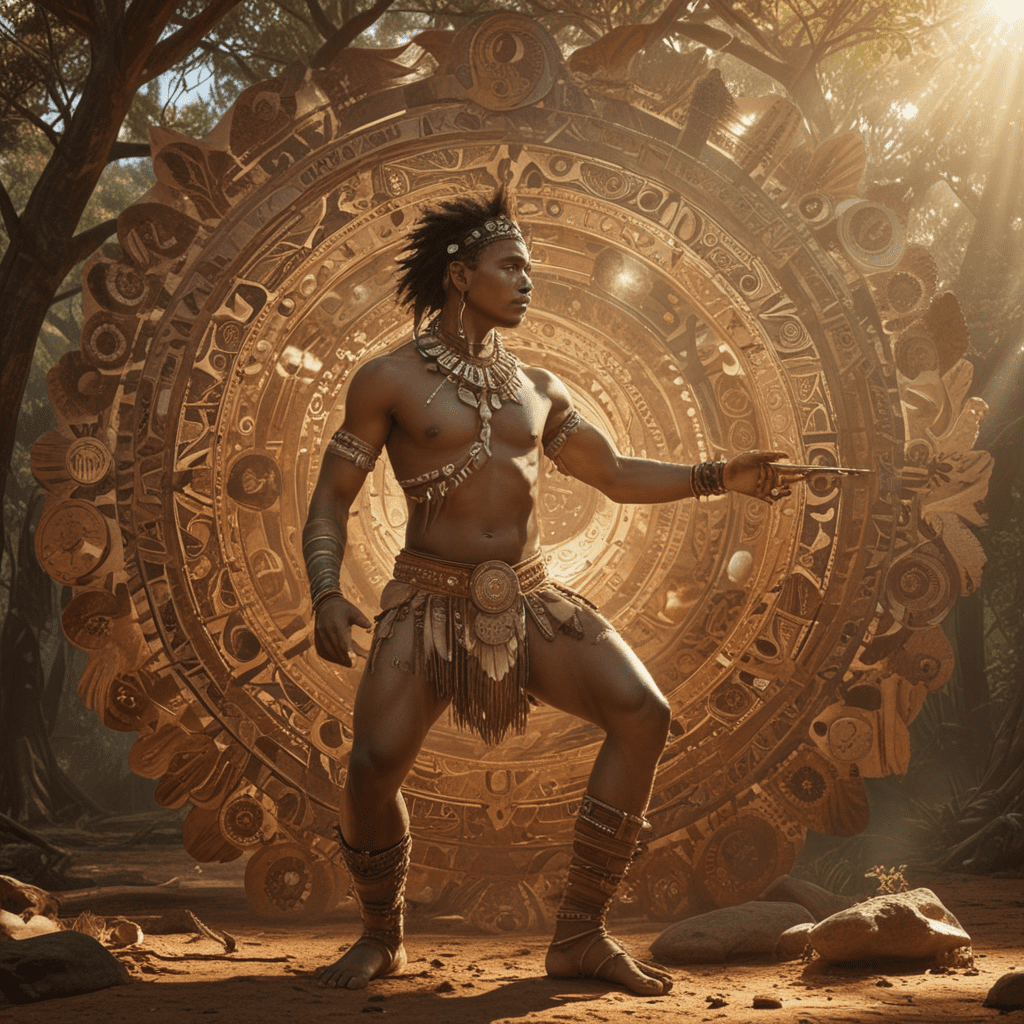Introduction
In the tapestry of human cultures, the concept of time holds a profound significance. Among the ancient traditions of Indigenous Australians, time transcends its conventional linear perception and unravels into a complex and multifaceted construct. This article delves into the concept of time in Australian Aboriginal mythology, exploring its sacred dimensions, cyclical nature, and deep connection to the land and its people.
The Dreamtime: A Sacred Era Beyond Time
At the heart of Aboriginal mythology lies the Dreamtime, a sacred epoch that defies the constraints of earthly time. It is an eternal realm where the Ancestral Beings, the creators of all life, embarked on their journeys, shaping the landscape and instilling the laws of nature. The Dreamtime exists both in the past and the present, blurring the boundaries between reality and the timeless realm of the divine.
Cyclical and Non-Linear Time Perception
Aboriginal time does not adhere to the Western convention of linear progression, but rather unfolds in a cyclical and non-linear manner. Events and seasons repeat themselves, forming an eternal cycle of birth, transformation, and renewal. This cyclical understanding of time mirrors the rhythms of the natural world, where the seasons, tides, and celestial bodies continually recur.
Time as a Fluid and Subjective Construct
Time is perceived not as an objective and universal measure, but as a fluid and subjective experience. It can be stretched, compressed, and manipulated by the Ancestral Beings and other spiritual entities. In Aboriginal storytelling, time becomes a malleable element, allowing for events to unfold simultaneously or in nonlinear sequences.
The Ancestral Beings and Their Timeless Journey
The Ancestral Beings, or Dreamtime Creators, are central to the Aboriginal concept of time. They are immortal beings who embody the wisdom and power of the Dreamtime. Their journeys across the land sculpted the physical and spiritual environment, creating sacred sites and establishing the laws of the world. The Ancestral Beings' presence is ever-present, connecting the past, present, and future into a timeless continuum.
6. The Impact of Time on Rituals and Ceremonies
Rituals and ceremonies play a crucial role in Aboriginal culture, serving as a bridge between the Dreamtime and the present. During these events, time becomes fluid, and the past and present converge. Rituals often reenact the journeys and actions of the Ancestral Beings, connecting participants to their sacred origins and allowing them to experience the timeless realm of the Dreamtime.
7. Time and the Indigenous Landscape
The Aboriginal landscape holds immense significance in their concept of time. Sacred sites, natural landmarks, and geographical features serve as physical manifestations of the Dreamtime. The landscape itself becomes a living record of the past, preserving the stories and journeys of the Ancestral Beings. Through interaction with the land, Indigenous Australians connect to the timeless continuum of their ancestors.
8. Dreaming as a Connection to the Past and Future
Dreaming, a central aspect of Aboriginal spirituality, transcends the boundaries of time. In the dream state, individuals journey into the Dreamtime, communicating with Ancestral Beings, receiving visions, and gaining insight into the past and future. Dreams are not mere reflections of the unconscious, but portals into a timeless realm where past, present, and future coexist.
9. The Concept of "Sorry Time"
"Sorry Time" is a term used to describe a period of mourning and reconciliation after the death of a loved one. During Sorry Time, time slows down, and the community gathers to remember the deceased, share stories, and honor their legacy. It is a time of deep reflection and connection, where the boundaries between past and present blur, allowing the spirit of the departed to linger and be remembered.
10. The Ongoing Significance of Time in Contemporary Aboriginal Culture
In contemporary Aboriginal culture, the concept of time remains central. Indigenous artists, writers, and performers use their works to explore and express their understanding of time. Traditional ceremonies and rituals continue to be practiced, connecting present-day communities to their ancient heritage and the timeless wisdom of the Ancestral Beings. The Aboriginal perspective on time offers valuable insights into the nature of reality, the cyclical nature of existence, and the interconnectedness of past, present, and future.
FAQs:
Q: How is time perceived differently in Aboriginal culture?
A: In Aboriginal culture, time is perceived as cyclical and non-linear, rather than linear. It is fluid and can be stretched, compressed, or manipulated.
Q: What are some of the key concepts related to time in Aboriginal mythology?
A: Some of the key concepts related to time in Aboriginal mythology include the Dreamtime, Sorry Time, and the cyclical nature of existence.
Q: How do Indigenous Australians connect with their past through time?
A: Indigenous Australians connect with their past through rituals and ceremonies, storytelling, and dreaming. These practices allow them to access the Dreamtime and experience the presence of their ancestors.
